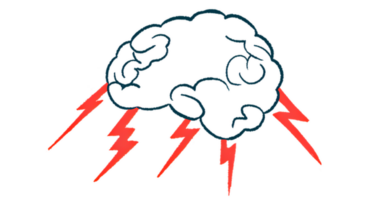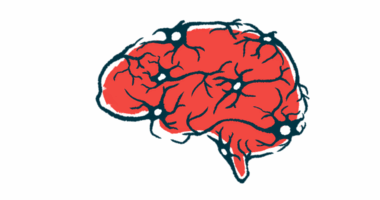Not Your Usual Neck and Back Pain

There are many ways to get a backache. This is new for me — lower back pain that leads to spasms and literally drives me to my knees.
It doesn’t feel like the pain from overdoing it in the garden. Every gardener knows that exquisite twinge from too much lifting or shoveling. After all the years I have gardened, I know that pain well. This is not my usual lower back pain.
An article published in 2018 in the European Spine Journal found significantly more cases of low back pain, with longer durations, in patients with Parkinson’s disease than in healthy controls. Parkinson’s patients also experience more frequent and intense lumbar pain. Researchers concluded that Parkinson’s progression can lead to degeneration of the lumbar spine, and this leads to low back pain for about 88% of this population.
According to an article published in 2018 in Frontiers in Neurology, both low back pain and Parkinson’s are associated with impaired proprioceptive function, sensory orientation during standing balance, anticipatory postural adjustments, automatic postural responses, and striatal-cortical function.
All of those are present as I wobble and weave through my “off” periods. Neck and back pain are more intense on the right side, but it’s subtle and hard to distinguish when the spasms are happening.
The authors of the Frontiers in Neurology article go on to suggest that “it may not be so implausible to consider [low back pain] as an axial parkinsonism, rendering it the most prevalent parkinsonism in the world.” Axial parkinsonism symptoms include gait freezing, postural instability, and trunk posture alterations and can have a significant impact on patients’ quality of life. Moreover, these symptoms are poorly responsive to dopaminergic drugs and surgical therapies.
In a 2008 article published in The Journal of the Canadian Chiropractic Association, a chiropractic doctor noted how early Parkinson’s without tremor imitated mechanical back pain. During a follow-up visit with the patient after the official Parkinson’s diagnosis, the provider noted that “something” started to change about a year earlier.
The article’s author wrote:
“In retrospect, … diagnosis may not have been able to be made any sooner as the patient’s symptoms were very subtle, non-specific, and common; … If it were not for the absence of significant objective back pain symptoms one day which caused the case re-evaluation, one may not have been alerted to an atypical set of symptoms developing and dialing into the diagnosis of PD may have been even further delayed.”
My lower back pains feel like my muscles are commanded by my broken Parkinson’s brain to tighten and “be ready.” Once I’m through the off period, the broken brain pain commands stop. I don’t have the sequelae of injury-related back pain — muscles that twinge as a reminder not to move in a certain position because it will make the pain worse. My off-period back pain seems to be an entirely different phenomenon.
For self-management, I lost 20 pounds to relieve mechanical stress on my body. I use massage and it helps, as do exercise and stretching. But my neck and back pain occur episodically — a “flicker effect.” If I attend immediately to the flickering surges of neck and back pain, then the consequences are diminished. The pain is not as intense, doesn’t last as long, and the spasms don’t occur.
When the flicker effect occurs, I apply the “sideways viewing” technique. Since the pain doesn’t appear to be injury-related, tied instead to abnormal “get ready, muscle” brain signals, sideways viewing helps. Sideways viewing allows me to witness that broken brain relationship and then meditate around the brain noise toward calm. It took a while to learn, but it works quite well if I am at rest.
I offer up this new perspective on neck and back pain associated with Parkinson’s. I see it as another manifestation of my favorite nonmotor culprit, homeostasis dysregulation. Parkinson’s causes dysregulation and abnormal flight-or-fight responses during off periods, which antagonize the back and neck muscles by triggering them to “get ready.” By using this to intervene, the pain lessens considerably, and I find relief.
This is still all new to me. I have not yet figured out how to walk around in the world with the pain present while simultaneously implementing sideways viewing, but I’m working on it. I am still failing more than succeeding, but with enough success thus far in applying sideways viewing to this unusual neck and back pain to encourage me.
Note: Parkinson’s News Today is strictly a news and information website about the disease. It does not provide medical advice, diagnosis, or treatment. This content is not intended to be a substitute for professional medical advice, diagnosis, or treatment. Always seek the advice of your physician or another qualified health provider with any questions you may have regarding a medical condition. Never disregard professional medical advice or delay in seeking it because of something you have read on this website. The opinions expressed in this column are not those of Parkinson’s News Today or its parent company, Bionews, and are intended to spark discussion about issues pertaining to Parkinson’s disease.








rich brown
I have a similar pain when I stand on a hard surface. I can stand and in a matter of minutes the leg will not even support
me. Seems to be nerve related..I then can go into almost no pain and stand up..pain mostly gone ?
Ginger Freund
Here is another perspective...My late husband first showed symptoms of Parkinson's Disease in 1992 and was diagnosed with it in 1994 when he was 48. He died in 2020 so he had it for many years and it posed numerous challenges but he never complained until 2017 when his back pain was horrendous. We went to many specialists but they only considered his Parkinson's, Nothing helped. Only five days before he died was he diagnosed with Stage 4 T-Cell Lymphoma and that was only because he suddenly noticed something on his neck. Something was also noted on his back and biopsies led to the dreaded diagnosis. What I am saying is that just because you have Parkinson's and back pain, doctors immediately conclude Parkinson's. Even if he didn't live one more day, a timely (and correct) diagnosis may have given him a better quality of life. And just to give one more heartbreaking piece of information, the Stage 4 information was not even given nor was any suggestion of hospice nor pain medication. Chemotherapy was offered.... five days before he died (while I was on the phone trying to schedule a multitude of tests required).
suzanna warnick
what is sideways viewing?
Dr. C.
Hi Ginger ~ As I stated in the first line of the column, there are many ways to experience a backache. I am sorry that your husband had to endure this pain caused by the lymphoma without timely or accurate diagnosis, or treatment that could have addressed his symptoms. In my research I was surprised to find that PD can lead to back pain, and how frequent this is a problem with PD patients.
Wish you well, thank you for your comments and insights.
Dr. C.
Dr. C.
Hi Suzanna ~ Check out my column on sideways viewing, published March 18. This is the link. http://parkinsonsnewstoday.com/2022/03/18/sideways-viewing-new-approach-pain-management/
Hope you find it interesting.
Dr. C.
Mary Gibson
Just got diagnosed with Parkinson’s. Don’t know what to expect
Mary Gibson
My back and neck hurt really bad
Dr. C.
Hi Ginger ~ Your story and that of your husband is such a sad case. I fear you are not alone and the difficulties that you have gone through are shared by others with chronic illness. Keep reaching out and finding support... I wish the very best for you.
Dr. C.
Vincent J Serritella
Routine walking-any kind of exercise causes severe lower back pain. If I sit down for 15 minutes etc. the pain goes away but will come back when I walk again. Stretching exercises and stationary bike riding help but the "method" won't last until the next time.
David Marsh
Great Post! If someone is experiencing neck and back pain that deviates from the usual or becomes chronic, seeking professional medical advice is crucial. Only through a comprehensive assessment can the underlying causes be identified, and an appropriate treatment plan can be developed.